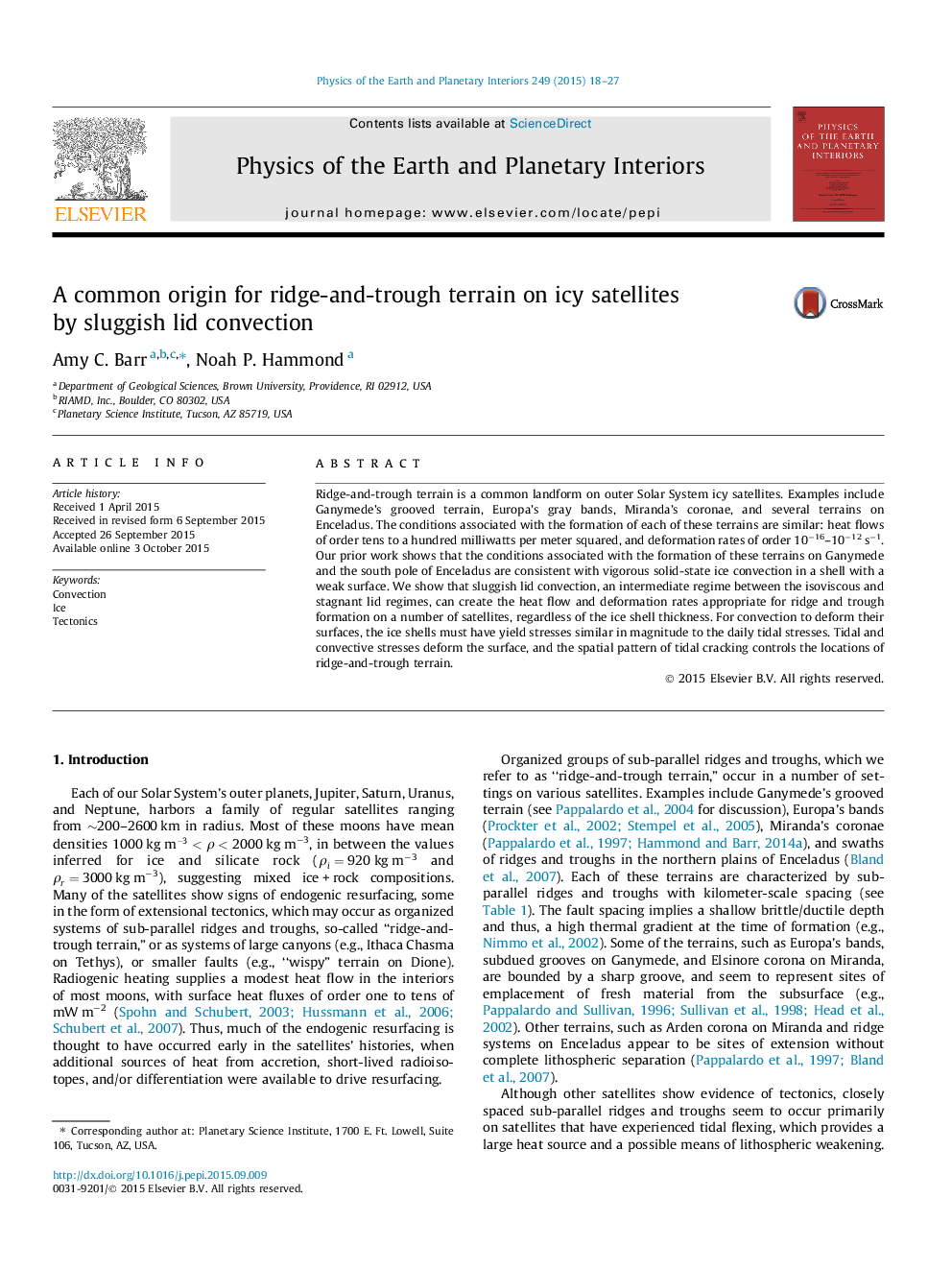| کد مقاله | کد نشریه | سال انتشار | مقاله انگلیسی | نسخه تمام متن |
|---|---|---|---|---|
| 4741436 | 1641492 | 2015 | 10 صفحه PDF | دانلود رایگان |
• Ridge-and-trough terrain is a common landform on the icy satellites of the outer planets.
• We show that the terrain can form due to sluggish lid convection in solid ice.
• Tidal flexing is required to weaken the near-surface ice.
• We find the Rayleigh–Nusselt number relationship in the sluggish lid regime.
• Convection is the process that forms ridge-and-trough terrain on all satellites.
Ridge-and-trough terrain is a common landform on outer Solar System icy satellites. Examples include Ganymede’s grooved terrain, Europa’s gray bands, Miranda’s coronae, and several terrains on Enceladus. The conditions associated with the formation of each of these terrains are similar: heat flows of order tens to a hundred milliwatts per meter squared, and deformation rates of order 10−16–10−12 s−1. Our prior work shows that the conditions associated with the formation of these terrains on Ganymede and the south pole of Enceladus are consistent with vigorous solid-state ice convection in a shell with a weak surface. We show that sluggish lid convection, an intermediate regime between the isoviscous and stagnant lid regimes, can create the heat flow and deformation rates appropriate for ridge and trough formation on a number of satellites, regardless of the ice shell thickness. For convection to deform their surfaces, the ice shells must have yield stresses similar in magnitude to the daily tidal stresses. Tidal and convective stresses deform the surface, and the spatial pattern of tidal cracking controls the locations of ridge-and-trough terrain.
Journal: Physics of the Earth and Planetary Interiors - Volume 249, December 2015, Pages 18–27
